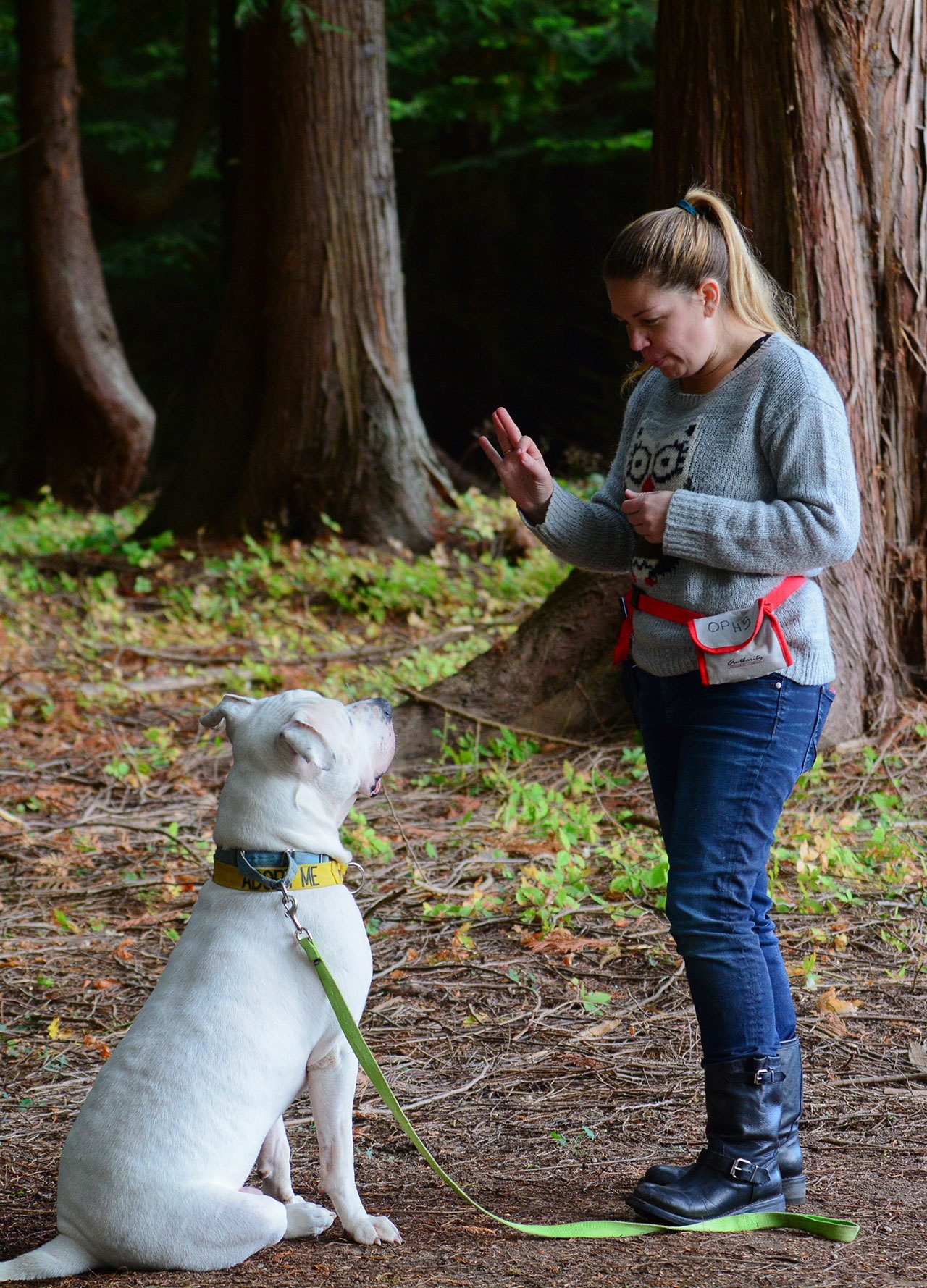PORT ANGELES — He can’t hear, but that doesn’t stop a 1-year-old, 100-pound Dogo Argentino at the Olympic Peninsula Humane Society from “listening” to staff and following directions.
Otolith, nicknamed the Deaf Wonder Dog, was likely born deaf, but thanks to his trainers at the Olympic Peninsula Humane Society (OPHS), he knows several signs and hand gestures.
“He doesn’t know he’s deaf,” said Ann Jorgensen, canine manager and animal behaviorist at OPHS. “His deafness does not hinder his ability to be a dog at all.”
Otolith, named for a part of the inner ear, explores the world using his other senses, relying heavily on sight and smell to guide him.
Breed’s hearing issues
About 10 percent of his breed — large, white muscular dogs also known as the “Argentine mastiff” bred to be social but with the instincts to hunt wild boars — are born deaf, Jorgensen said. Another 30 percent are deaf in one ear.
Jorgensen fell in love with Otolith while volunteering at a shelter in Southern California but saw he wasn’t living in the best conditions. She recently had him transferred to Port Angeles, where he can get the training he needs to easily integrate into a family, she said.
Jorgensen, his trainer, has taught him at least eight commands and said there are more he can learn.
“He knows probably more than your basic household dog, but because of his size, I feel it’s very important he be good with his basic commands,” she said.
She taught him to make frequent eye contact and to pay attention to the distinct hand signals she makes. When walking, Otolith constantly makes eye contact with Jorgensen and is always looking around.
Among the techniques she uses to train him are food lures. By using treats, she has trained Otolith to understand that when he sees someone make an “OK” sign with their hand, he’s done something good.
Jorgensen usually uses a clicker to praise dogs that can hear. The OK sign replaces the clicker in Otolith’s case.
She is working to teach him to return when he sees a strobe light at night and hopes to get him a vibrating collar — not a shock collar — to teach him to return at any time.
“If you have a large acreage, it would be like having to whistle to call him back,” she said.
Training Otolith and other deaf dogs has improved Jorgensen’s communication with all animals, she said.
“It’s expanded my skills as a trainer, and it makes you think when you’re training about being consistent and being clear what you’re asking,” she said.
“It’s actually made my training more concise, and they end up being better trained.”
When working with a deaf dog, people realize how visual dogs actually are, she said.
There are few instances where Otolith’s deafness could impact how he interacts with another dog because he’s always looking, she added.
As she continues to train Otolith, the humane society is seeking the right family to adopt him. Both because of his breed and his condition, applications are being screened carefully.
Because of Otolith’s size and young age, Jorgensen doesn’t recommend him living around small children.
She said he still has his “teenage naughties” and might chew things he isn’t supposed to. He also enjoys chasing cats.
While he’s muscular and might look intimidating, Otolith loves being social with people and other dogs, she said.
“Even with his little teenage naughties right now, he’s so loving and is a big goofball,” she said.
“Everyone who works here has grown to love him.”
________
Reporter Jesse Major can be reached at 360-452-2345, ext. 56250, or at jmajor@peninsuladailynews.com.

